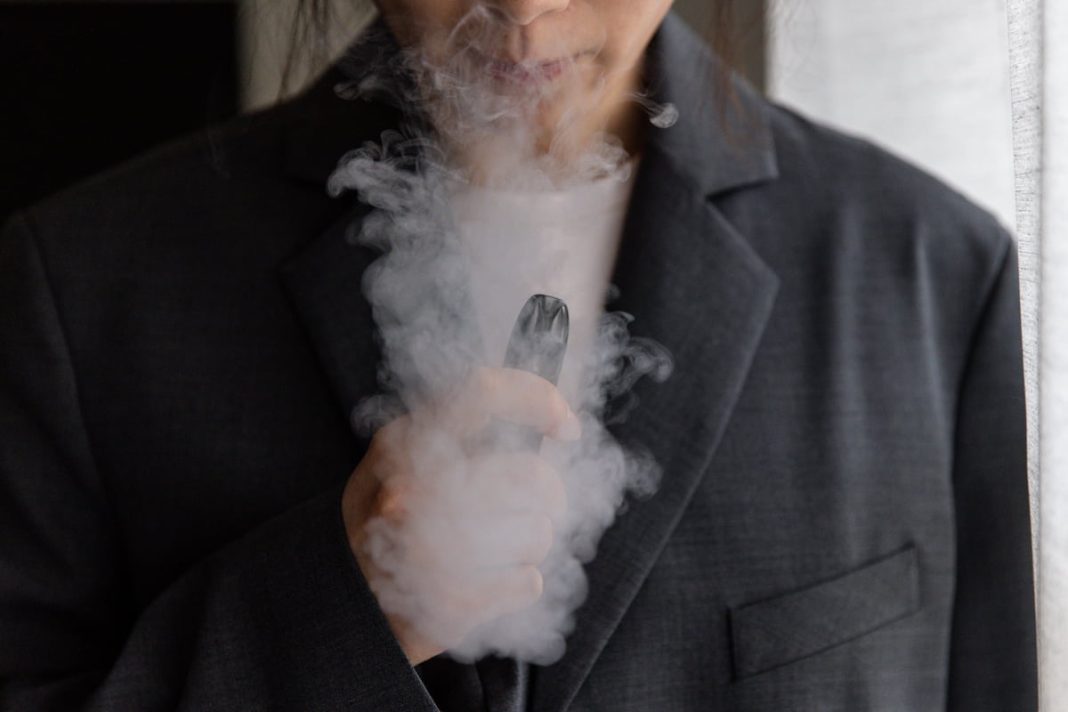A cloud of smoke has descended on changes to a looming vape ban, with a new deal allowing the electronic cigarette to be sold in pharmacies but without a doctor’s prescription.
An additional 1185 teenagers will start vaping each week without regulation on e-cigarettes, the Cancer Council estimates.
But questions remain unanswered about how much a therapeutic vape, which has less nicotine than a normal e-cigarette, would cost after a crackdown on their importation with the black market charging about $50 to $60.
The price would be set by the private market, Health Minister Mark Butler said.
But Opposition health spokeswoman Anne Ruston argued there needed to be a balance between protecting children, not jacking prices up too much which forced people to the black market and “understanding that consenting adults clearly have made a choice that they wish to vape”.
The coalition wants vapes regulated the same as cigarettes.
The opposition’s proposal would bring in plain packaging and a licensing regime similar to cigarettes, allowing vapes to be sold over the counter in places such as convenience stores.
The legal age would remain 18 and nicotine content would be limited, with a prescription model applied to people who need stronger levels, Senator Ruston said.
Flavoured vapes targeting children would be banned, the Therapeutic Goods Administration would help regulate safer products and $250 million would be set aside over four years for a new federal police task force.
The opposition would also look to other countries such as New Zealand to determine how an excise should be applied, such as a per millimetre excise on the liquid, Senator Ruston said.
“We have a harm-reduction model that’s working very successfully in getting children not to take up smoking and so what we want to do is use this proven model,” she said.
A Greens deal with the government, in exchange for their vote in the Senate, watered down the original ban by scrapping the need for a doctor’s script to buy a vape.
Pharmacists will need to have a conversation with the customer, provide information on health harms and offer alternative ways to stop smoking.
People will need to confirm their identity but pharmacies will not record patients’ data and there will be limitations on the amount of nicotine in each vape.
People under the age of 18 will still need to visit their GP and get a prescription to buy a vape. The personal use of vapes will not be criminalised.
The legislation is set to be voted on in the Senate on Wednesday.
The amended reforms were “a sensible balance between access and serious reform”, Mr Butler said.
The initial reforms were watered down because “prohibition doesn’t work”, Greens Leader Adam Bandt said.
“History is replete with examples of politicians telling adults not to use certain drugs only to find that doesn’t actually fix the problem,” he told ABC radio.
Australia Medical Association president Steve Robson argued access needed to be minimised to reduce smoking levels.
He backed the pharmacy model as a better alternative to the lack of regulation, saying vapes were designed to only be a temporary measure to help people stop smoking.
But the Pharmacy Guild of Australia wants prescriptions to remain, arguing pharmacists are healthcare professionals who dispense medication that has proven therapeutic benefit.
It was up to individual pharmacies to decide whether they sell vapes as the government could not direct them on what to sell, Mr Butler said.
By Dominic Giannini, Tess Ikonomou and Sophia McCaughan in Canberra



